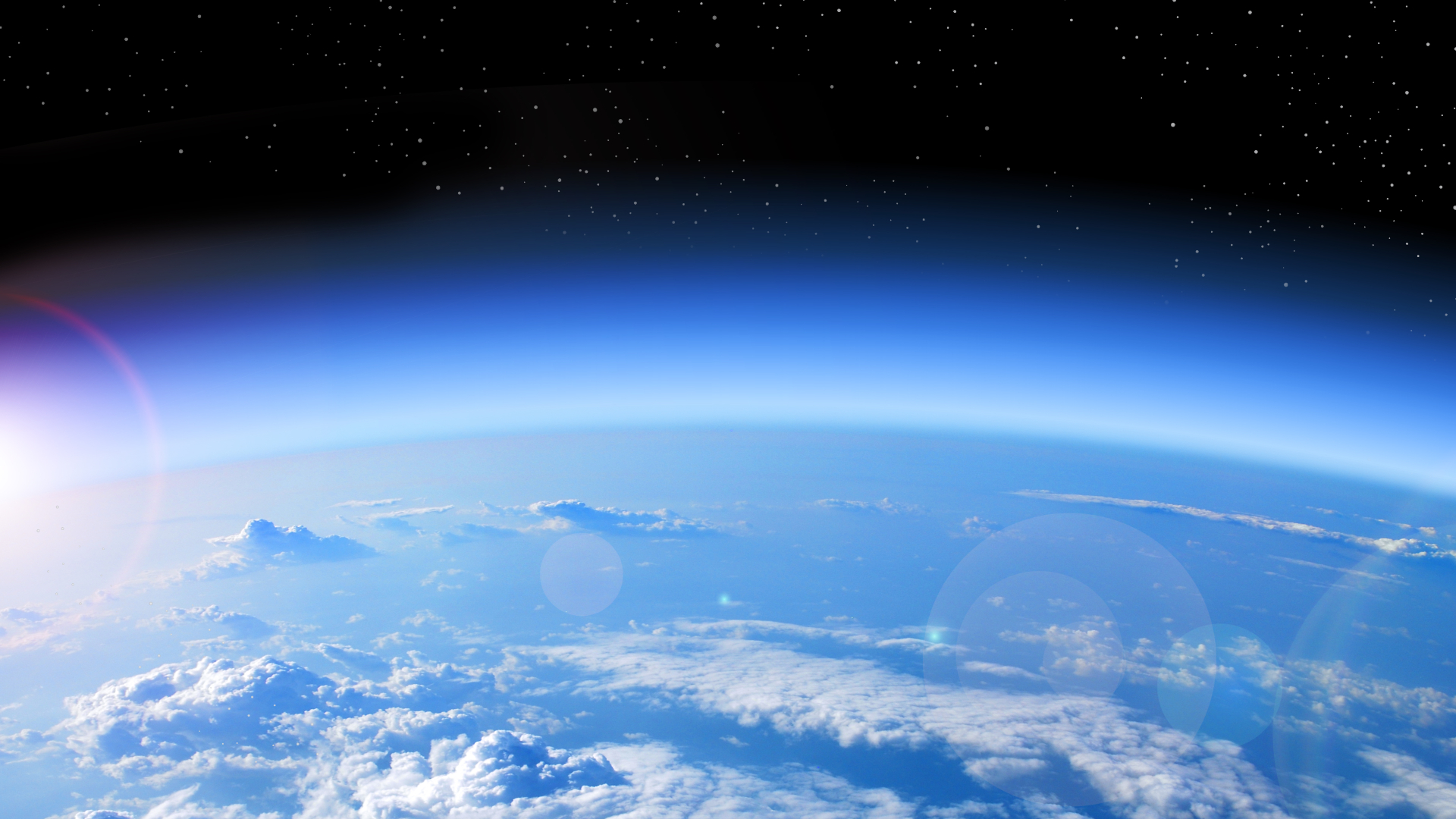When mountaineers climb Mount Everest, they routinely carry oxygen cylinders, devices that allow them to breathe freely at high altitudes. This is necessary because the closer you get to the edge of Earth’s atmosphere, the less oxygen there is available compared with the plentiful amounts found at sea level.
This is just one example of how variable Earth’s atmosphere is and showcases the elemental makeup of its layers, from the troposphere, near sea level, to the exosphere, in its outermost regions. Where each layer ends and begins is defined by four key traits, according to the National Weather Service: temperature change, chemical composition, density and the movement of the gases within it.
So, with this in mind, where does Earth’s atmosphere actually end? And where does space begin?
Related: How much water is in Earth’s atmosphere?
Each of the atmosphere’s layers plays a role in ensuring our planet can host all manner of life, doing everything from blocking cancer-causing cosmic radiation to creating the pressure required to produce water, according to NASA.
“As you get farther from Earth, the atmosphere becomes less dense,” Katrina Bossert, a space physicist at Arizona State University, told Live Science in an email. “The composition also changes, and lighter atoms and molecules begin to dominate, while heavy molecules remain closer to the Earth’s surface.”
As you move up in the atmosphere, the pressure, or the weight of the atmosphere above you, weakens rapidly. Even though commercial planes have pressurized cabins, rapid changes in altitude can affect the slim eustachian tubes connecting the ear with the nose and throat. “This is why your ears may pop during takeoff in an airplane,” said Matthew Igel, an adjunct professor of atmospheric science at the University of California, Davis.
Eventually, the air becomes too thin for conventional aircraft to fly at all, with such craft not able to generate enough lift. This is the area scientists have decreed marks our atmosphere’s end, and space’s beginning.
It’s known as the Kármán line, named after Theodore von Kármán, a Hungarian American physicist who, in 1957, became the first person to attempt to define the boundary between Earth and outer space, according to
EarthSky
.
This line, given it marks the boundary between Earth and space, not only denotes where an aircraft’s limits lie, but is also crucial for scientists and engineers when figuring out how to keep spacecraft and satellites orbiting Earth successfully. “The Kármán line is an approximate region that denotes the altitude above which satellites will be able to orbit the Earth without burning up or falling out of orbit before circling Earth at least once,” Bossert said.
“It is typically defined as 100 kilometers [62 miles] above Earth,” Igel added. “It is possible for something to orbit the Earth at altitudes below the Kármán line, but it would require extremely high orbital velocity, which would be hard to maintain due to friction. But nothing forbids it.
“Therein lies the sense one should have for the Kármán line: It is an imaginary but practical threshold between air travel and space travel,” he said.
Various factors, such as the satellite’s size and shape, play a part in determining how much air resistance it will experience and, consequently, its ability to orbit Earth successfully, according to Bossert. Typically, satellites that are in low Earth orbit — a classification that tends to be given to satellites at an altitude of less than 621 miles (1,000 km) but sometimes as low as 99 miles (160 km) above Earth, according to the European Space Agency — will fall out of orbit after a few years, Bossert said, due to “drag from the Earth’s upper atmosphere gradually slowing down orbital speed.”
Related: How fast does the Earth move?
However, that doesn’t mean Earth’s atmosphere is undetectable beyond 621 miles.
“The atmosphere doesn’t just disappear once you get into the region where satellites orbit,” Bossert said. “It is thousands and thousands of kilometers away before evidence of Earth’s atmosphere is gone. The very outer atoms from Earth’s atmosphere, the hydrogen atoms that make up its geocorona [the outermost region of the atmosphere], can even extend beyond the moon.”
So, if someone were to reach the Kármán line, would they notice anything? Would they be aware that they were, essentially, straddling the boundary between Earth and space? Not really. “Nothing really changes,” Bossert said.
Igel agreed. “The line is not physical, per se, and so one would not notice crossing it, nor does it have any thickness,” he said.
What about being able to survive, even for a brief period, at the Kármán line? What if you were dropped there without a bespoke spacesuit or a mountaineering style oxygen tank? If you could get to it, would you be able to breathe at such a high altitude? And could birds ever reach such heights?
“In principle, flight is still possible all the way up to the Kármán line,” Igel said. “In practice, however, animals cannot survive at altitudes above the ‘Armstrong limit,’ which is around 20 km [12 miles] above the surface, where pressures are so low that liquid in the lungs boils.”
Originally published on Live Science.

